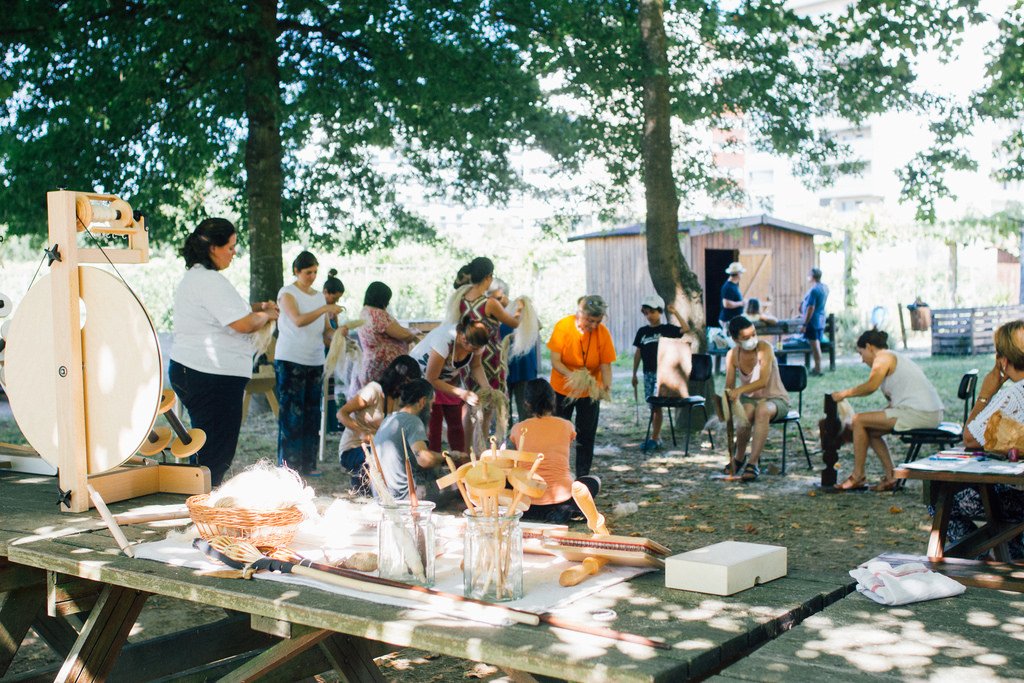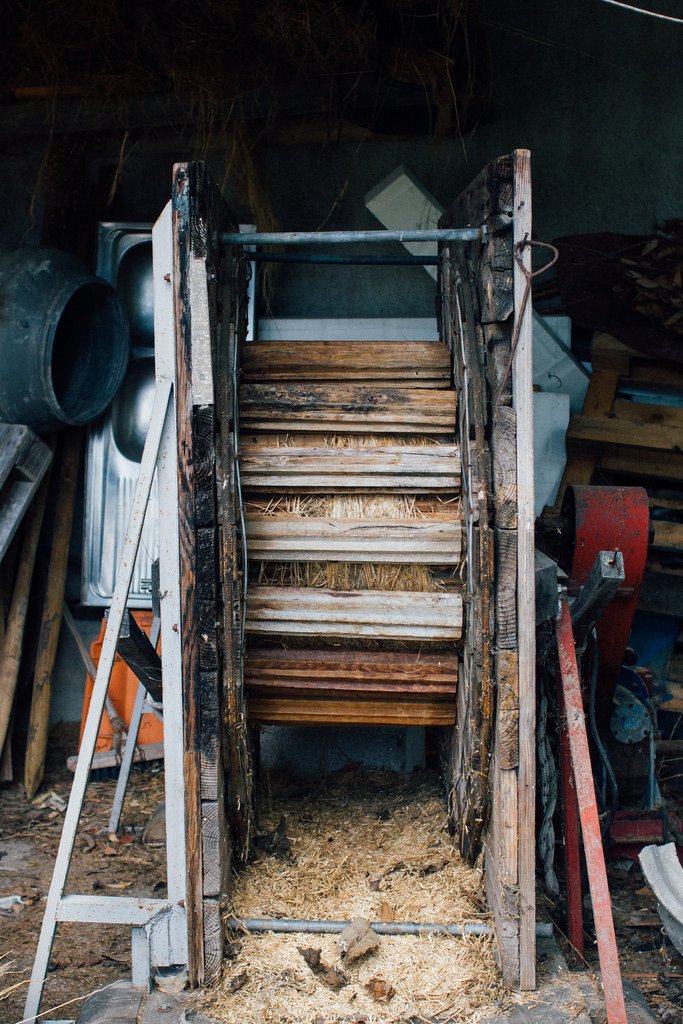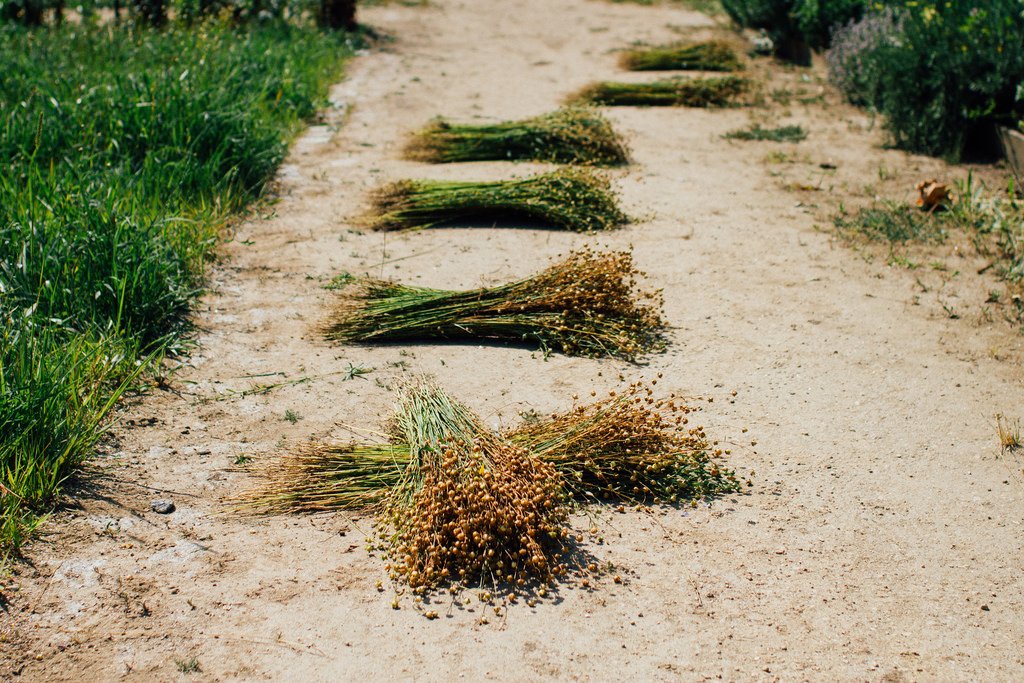Blog

The Flax long course - final day
We sowed, saw it grow, harvested, rippled, retted, dried and ground our own flax in a two and a half months time. This was the easy part of flax growing, the hardest one was yet to come and that is the one that demands us to scutch, comb and spin our flax.

Glorious flax break
This is one of the rare flax grinders still working in our country and one of the only two that work with an engine (the third I know of that is still working is powered by animal traction).

Flax harvest at Parque da Devesa
The last few days have been intense and especially dedicated to flax, which has ripened quickly in the heat and is ready to harvest. The variety we are growing, Galego Flax, has a characteristic that is more common in wild flax and which makes it absolutely essential to harvest at the right time.

Slow and steady
This year the weather was radically different from last year's during the flax season: lots of rain and lower temperatures that have been raising slow and steady.

Growing
As we get ready for next saturday's shearing, our flax keeps growing. If all goes well, that empty area above the linhal will become a small Dyer Plant’s Garden.

Flax sowing 2016
After the trouble we had finding Galego Flax seed to start our crop in Serralves last year, it felt good to have it multiplied and have this year's sowing assured without having to count seeds.

At the shop: books about flax!
Finding books on flax cultivation written in Portuguese is not easy. Most of the ones I find that are actually useful for practice were published in the first half of the 20th century and are rarities, really.

Flowering Flax
Most definitely, the most beautiful time in flax growing: the flowering. The plants already have their maximum height, and they get the typical purple flowers in the morning, that then fall throughout the day.

The growing Flax
A week after sowing and it seems none of the catastrophes I feared occurred. The birds didn’t flood in to eat the seeds, we didn’t bury them too deep for them to sprout, and we didn’t kill them from lack of water.

How many seeds do we need and why?
I think the question I tried hardest to find a clear answer to from the people I consulted and the material I read was the exact amount of seeds I would need for a given area.

Here they are!
Four days after the sowing, the little galego flax sprouts started peeking out.

Flax - Sowing
The research I've done so far has made me realize how complex this little plant is and how the quality of the flax we'll get depends almost exclusively on what is done at the time of sowing, and well, also on a series of meteorological factors that we can't control.

Flax - preparing the soil
Our flax was sowed a little bit later than it should have, by the 23rd of April. The plan was to do it two weeks earlier, at the end of March/beggining of April, but problems related with the equipment necessary to prepare the soil made us postpone it several times, and also change the location, and this date was the best we could do.

The Flax field in Serralves
I haven't even talked about sowing the flax, that we did last April, but by now the flax has flowered and the seed capsules are maturing. I'll get around to talk about it, but I needed some time to organize information, take care of silkworms and plan a few more things I haven't talked about yet, and all along the flax was growing.

The cloth from those seeds
I've known Maria das Dores for about two years. I couldn't forget the time I met her because I almost went bankrupt for buying yards and yards of the fabric she manufactures completely on her own, right from those seeds. I've been saving that fabric ever since and have only used a small square for a very special occasion.

Galego Flax: the seed
I had been offered Galego Flax seed in a previous occasion, although in a small quantity, so I never thought that getting enough seed for the area we had planned to grow would be so difficult. But until now, I had never tried to buy or get seed of this variety.

Flax. But which flax?
All cultivated flax belongs to the Linum usitatissimum L. species, of which there are hundreds of different varieties. Some of these varieties are commercial and it is these that are currently used for the commercial production of flax for various purposes, as they are more productive.

